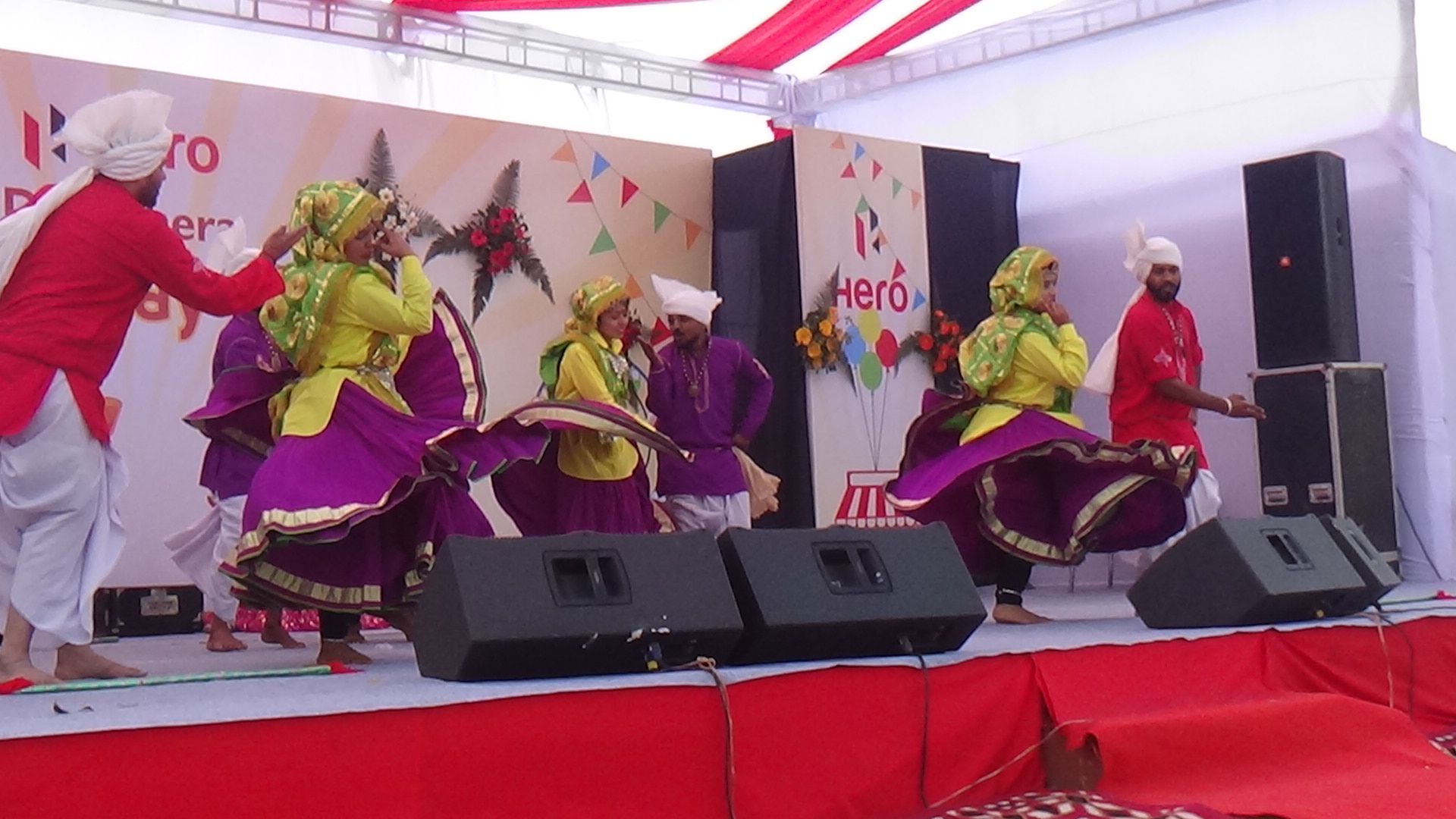\r\n The zest for life present in the natives of Haryana is channelled into various dance and music forms. The people celebrate all occasions with a lot of pomp and show, be it a child birth, a marriage or any religious or social function. The 'Khoria' is popular when a boy is getting married, while the 'Ghoomar' and the 'Gangaur Puja' dances are religious. The 'Raas' is also an ancient dance and is associated with Krishna, the flirtatious god.
\r\n
\r\n The Dance Forms
\r\n Dhamal
\r\n Dhamal is a dance form, whose origin goes back to the days of the Mahabharat. The Dhamal dance is especially popular in the areas around Gurgaon, inhabited by Ahirs. In the beginning of the dance, the player gives the first long note, then Dhol, Tasha, Nagara, pick up the beat and the dance begins. Some of the dancers carry large Daphs in their hands. These are edged with frills of brightly coloured fabric, others carry sticks ('Shuntis') of medium length, wrapped in tinsel and tasseled at both ends.
\r\n
\r\n Daph Dance
\r\n It is another from of seasonal dance of farmers depicting the joyful emotions on a good harvest and advent of Spring. It is a sort of community dance. The "Daph" the one sided drum and the sound of the ornaments worn by the women offer the music.
\r\n
\r\n Phag
\r\n The dance done basically in the lunar month of Phalgun seeks to celebrate the colourful festival of Holi. The dancers come together to the sound of 'Tasha', 'Nagara' and 'Dhol'. The men come running & singing the traditional songs of 'Phalgun', followed by women carrying 'Koraras', the knotted lengths of cloths. They run about the men hitting with the 'Koraras' while men defend themselves as best as they can with 'Shuntis'.
\r\n
\r\n Ghoomar
\r\n Marked by circular movements of the dancers, Ghoomar is generally performed by the girls of the areas bordering Rajasthan. The dancers form a circle, and move about clapping and singing, while tempo of the dance is accelerated. The accompanying songs are full of satire and humour and refer to contemporary events, while the dancers twirl around in pairs.
\r\n
\r\n Jhumar Dance
\r\n The dance named after an ornament called as "Jhumar" commonly worn on forehead by young married women is exclusively danced by women. It is otherwise known as 'Hariyanvi Gidda'. Dressed in colourful costumes, the ladies dance in gay abandon singing and clapping with the beats of 'dholak' and 'thali' while gracefully moving in a circle.
\r\n
\r\n Loor
\r\n The Loor is performed by girls during the month of 'Phalguna' (pring), and is so named because the word 'Loor' means girl in the Bangar area of Haryana. Performed during the Holi festival, this dance marks the spring season and the sowing of the Rabi crops. The song is generally in the form of questions and answers.
\r\n
\r\n Gugga dance
\r\n For the Gugga dance, devotees of Gugga (a saint) dance around his grave in his honour and sing songs in his praise. The Gugga is exclusively a male dance ritualistic in nature dance performed in procession taken out in memory of saint Gugga. Though the dance is very simple but it evokes spiritual fervour among the devotees of Gugga.
\r\n
\r\n Other Dances
\r\n Other dances of Haryana include Khoria, which is quite similar to Ghoomar and is performed only by women on weddings and festivals. The 'chaupaia' is a devotional dance and is performed by men and women carrying 'manjiras'. In the 'deepak' dance, men and women carrying earthen lamps, express their devotion through dance, which often lasts whole night. During the rains, the 'Ratvai' dance is the favourite of the Mewatis. The 'Been-bansuri' dance goes on with the accompaniment of 'been' (a wind instrument) and 'bansuri' (flute).
\r\n
\r\n Musical Accompaniments
\r\n An earthen pitcher is used as a miniature drum, with its mouth covered with strips of rubber and played with both hands. In many dance forms, the main dancers carry their own musical instruments i.e. 'dholak', 'manjira', 'chimta', 'deru' and cymbals and dance to the beat thereby creating a solemn atmosphere. 'Been' ` and 'bansuri' are also very common instruments used in creating the background music.
\r\n
\r\n\r\n Haryanvi Folk Dance Official Page Click Here
\r\n\r\n
\r\n\r\n Performance Video Click Here




